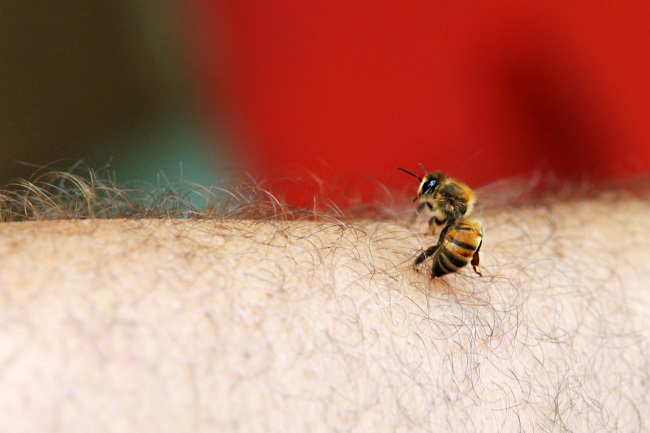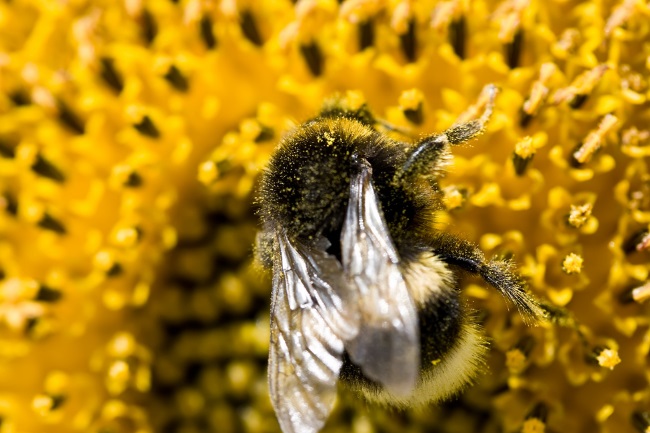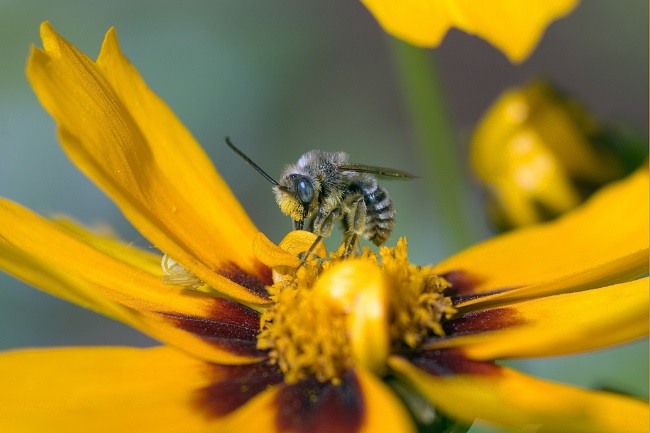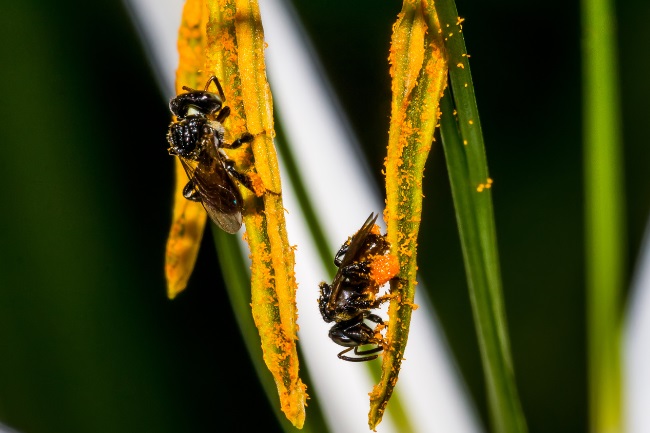All female bees have stingers; however, most choose not to use them or have stingers too small to hurt a human. Many people are afraid of bees, but they are far more beneficial than harmful to humans, being essential pollinators.
Contents
Why do bees sting?

We may think bees sting out of spit or simply annoy us, but actually, as with most animals, this kind of weapon is purely for defence. Animals tend to injure others for two reasons, for food or to defend themselves, their young or their territory. It should be immediately evident that bees do not want us for food; therefore, their stings are very much used in defence.
Often when it comes to negative interactions between wildlife and humans, the problem stems from miscommunication. Animals often give fair warning before they attack, as any combat carries a risk and is ideally avoided. This may be a flattening of the ears or a growl in dogs, while livestock often toss their heads or paw at the ground. Problems usually arise when humans misunderstand or do not observe these warning signs.
In bees, these signals may be even more challenging to detect, due to their size. One easy to spot bee communication technique is to wave their legs at you. They often do this when alighted on a surface. If a human comes too close, they will wave their legs as a warning sign to tell you to back off.
Another common warning sign may be a bee buzzing around you. This can easily be mistaken for a bee simply out on its rounds looking for food, as they will often investigate humans wearing bright colours or floral perfumes. However, if many bees start buzzing around you, it’s worth considering this a sign that you have gotten too close to a nest and may be stung if you come any closer.
Of course, bad luck plays a big part in bee attacks, such as accidentally strimming through a bees nest or disturbing nesting bees in tree cavities. Listening out for buzzing sounds and looking for large numbers of bees going in and out of cavities can help identify nesting spots, but accidental encounters are always a possibility.
Aside from defending their nest, which is the main time when serious stings may occur, bees will also sting if they feel personally threatened. This is usually when we humans are trying to swat them or accidentally step or lean on them. It’s essential to remain calm when bees comes to investigate you. Simply remain still, and they will leave, or you can stand up and walk calmly away. Flailing limbs or newspapers will likely be taken as an attack and could cause the bee to sting.
Also read: What to do if You’re Stung by a Bee (& How to Get Sting Out)?
What species of bee don’t sting?
While being stung is never desirable and can have severe consequences to those with allergies, it’s worth remembering the vast majority of bee species have no interest in stinging you. Although all female bee species have stingers, the males having none, most are too small to get through the human skin. Additionally, most bees do not have hives, and as this is the main reason for stinging a human intruder, they have little reason to bother us.
| Bee Species | Common Name |
|---|---|
| Melipona beecheii | Beeche’s Stingless Bee |
| Trigona carbonaria | Sugarbag Stingless Bee |
| Tetragonula spp. | Tetragonula Stingless Bees |
| Scaptotrigona spp. | Scaptotrigona Stingless Bees |
| Bee Species | Common Name |
|---|---|
| Osmia lignaria | Blue Orchard Mason Bee |
| Osmia cornifrons | Hornfaced Bee |
| Osmia rufa | Red Mason Bee |
| Bee Species | Common Name |
|---|---|
| Megachile rotundata | Alfalfa Leafcutter Bee |
| Megachile centuncularis | European Wool Carder Bee |
| Megachile apicalis | Large Leafcutter Bee |
| Bee Species | Common Name |
|---|---|
| Andrena fulva | Tawny Mining Bee |
| Andrena haemorrhoa | Red Mining Bee |
| Andrena bicolor | Gwynne’s Mining Bee |
Also read: Can Butterflies Sting? How do They Protect Themselves?
So what bees can we safely have at our picnic without panicking?
Bumblebees

There are around 275 species of bumblebee around the world. These charismatic bees have won favour with humans due to their extreme fluffiness, making them look more adorable than the average bee. In addition, most species are very docile and will even sit on your hand without feeling the need to sting.
They do create small nests, though their colonies do not reach the level of honey bee colonies. Queen bumblebees are often very large and noisy and can frighten some people when they emerge in the spring. However, their only thought is where to find enough food to satisfy their hunger, after having awoken from their long winter sleep.
Also read: Can a Bumblebee Sting You? Is it Painful?
Sweat bees

There are around 2,000 species of sweat bees around the world. These small bees are so named for their tendency to drink sweat from the skin of humans and other mammals as a source of moisture. Sweat bees come in a range of colours, from the traditional yellow stripes to metallic greens and blues.
Sweat bees tend to live in burrows they dig into bare ground and can be solitary or social, and very occasionally parasitic. They are essential pollinators and largely very calm and non-violent. However, they can become very irritating as their habitat of landing on human skin to lick the sweat can be rather annoying. They rarely, if ever, sting, and because of their size their sting is much less painful than that of other bee species.
Stingless bees

Rather confusingly stingless bees do have stingers. The difference between stingless bees and their close relatives honey bees, is that the stinger is too small to defend. Like honey bees, stingless bees are social and create nests. They are also sometimes kept in artificial hives.
There are around 550 species in the world across most tropical regions. Although stingless bees cannot sting, they use biting to defend their nest, which can cause discomfort.
Hoverflies

Hoverflies are not bees; however, they are worth including as many people confuse them for bee species. This is a purposeful camouflage by the hoverflies, as they carry their often yellow and black markings so predators will mistake them for bees and leave them alone.
There are around 6,000 species of hoverfly in the world. They are so named because of their tendency to hover in the air. This is different behaviour from many bee species, making it an excellent way to spot hoverflies pretending to be bees. Unfortunately, they often come to investigate humans, scaring those that have a fear of bees.
However, there is plenty of upside to having hoverflies around. Not only are they excellent pollinators, but they also eat many crop pests, such as aphids. And perhaps best of all, they have no sting, so they cannot harm you, even if they might frighten you.
Bees: Friendly or fierce?
Much has been made of the bees ability to sting, but the fact is that most rarely do. Some species can be particularly aggressive, such as the ‘killer bee’; however, most are busy going about their day. Largely they completely ignore us, only becoming concerned when we threaten their colony or their lives. So next time you see a bee, remember that it’s not out to hurt you, but its daily routine is benefiting you and the world around you in ways you cannot imagine.

